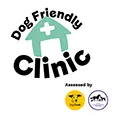With major advances in treating serious infectious and other pet diseases, oral disease - most importantly periodontal or gum disease caused by the build-up of plaque and tartar - has become the number-one health problem for dogs.
It is estimated that without proper dental care 70% of dogs will show signs of oral disease by the age of three. With your help, your pets can have healthy teeth and gums throughout their lives.
Tips for better dog dental care
To look after your dog's teeth, is relatively simple based on;
- A nutritious diet
- Chew treats
- Regular brushing at home
- Yearly dental check-ups with the veterinary surgeon
The right diet to keep your dog's teeth healthy
The wrong kinds of food can lead to dental disease in your dog. Feeding your dog a dry food rather than a moist, canned one will, through its mild abrasive action on the teeth, help remove the bacterial plaque that can harden into tartar.
Dry food also provides adequate chewing exercise and gum stimulation. Avoid giving your pet sweets and table scraps as they may also increase plaque and tartar formation.
Our vets and nurses may recommend a dental diet, these diets are specially formulated dry biscuits designed to reduce plaque and tartar build-up, especially if a dog is prone to dental problems related to its breed or individual genetic history.
How to brush your dog's teeth
Dogs need to have their teeth brushed in order to eliminate the dental plaque that can cause tooth decay and the formation of tartar, which can lead to gum disease. You should begin a regular, daily brushing routine when your puppy is between six and eight weeks of age to get them used to the process as early as possible.
Even older dogs can be trained to accept having their teeth brushed. You simply need to introduce the activity gradually and make the experience a positive one for your pet.
Reassure and praise them profusely throughout the process and reward them with a very special treat when it's finished.
Step by step guide to brushing a dog's teeth
Step 1
Start by simply using your finger and rub it gently over your pet's gums and one or two teeth. Repeat until your pet seems fairly comfortable with this activity.
Step 2
Gradually introduce a gauze-covered finger and gently scrub the teeth with a circular motion.
Step 3
Then, you can begin to use a toothbrush, either an ultra-soft model designed for people or a special pet tooth-brush or finger brush, which is a rubber finger covering with a small brush built in at its tip.
Step 4
Finally, once your pet is used to having his or her teeth brushed, you can start using a pet toothpaste - our veterinary staff will be able to recommend a suitable one for your dog. Don't use human toothpaste, as it can upset your pet's stomach.
Book a yearly dental check-up for your dog
Doing your best to ensure that your dog receives the proper diet and regular brushing at home will help maintain teeth and gums in top condition. To provide optimum dental care at home, you need to start with a clean bill of dental health.
We recommend visiting the practice at least once a year for the vet to give your dog a thorough examination of the entire oral cavity to determine whether there are any underlying problems and, especially important, tartar build-up.
Brushing removes plaque but not tartar, so if your dog's teeth do have tartar, the vet will have to remove it with a professional scale and polish, which is completed whilst your dog is under anaesthesia.
After removing the tartar above and below the gum line, our vets and nurses will provide you with instructions for home care and follow-up.
Dos and don'ts to improve your dog's teeth
- Chew treats, including hard meat-protein biscuits and rawhide chews for dogs, can help remove plaque, and provide stimulation for the gums.
- Watch out for wood - throwing sticks for dogs can result in splinters and gum damage. Pieces of wood can even become stuck in the roof of the mouth, perforate the oesophagus or if they manage to get into the gut, cause an obstruction.
- Don't let your pet chew on hard materials like cooked bones or stones. They can wear down, even break teeth, damage gums and lead to infection or be swallowed and lead to blockages.
Did you know?
Puppies develop their deciduous teeth at two weeks of age, with their 42 permanent teeth starting to appear at three months.








